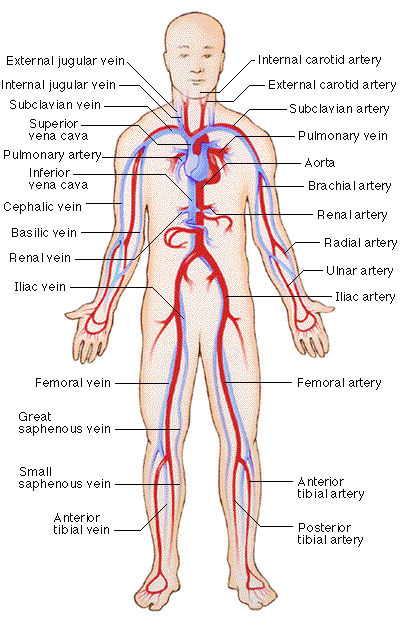
Circulatory System
|
The circulatory system is composed of vessels and muscles that control the flow of blood around the body. This process of blood flowing around the body is called circulation. The main components of the circulatory system are the heart, arteries, capillaries and the veins.
Let's take a look at how blood travels around your body. Here are a selection of diagrams to help you understand the cycle. The first step of Blood leaves the heart from the left ventricle into the biggest artery, called the aorta. The heart is a strong muscle, which is divided into 4 compartments (the left and right atrium and ventricles). It is important that fresh blood from the aorta goes directly to the brain, because the brain needs oxygen constantly otherwise we get irreversible damage. Another important organ for the blood to pass through is the lung. Here waste carbon dioxide is replaced with fresh oxygen. The pressure in the arteries is higher than in the veins. Blood returns to the heart through the veins.
Diagram of : The Circulatory System

Go back to homepage: Click Here